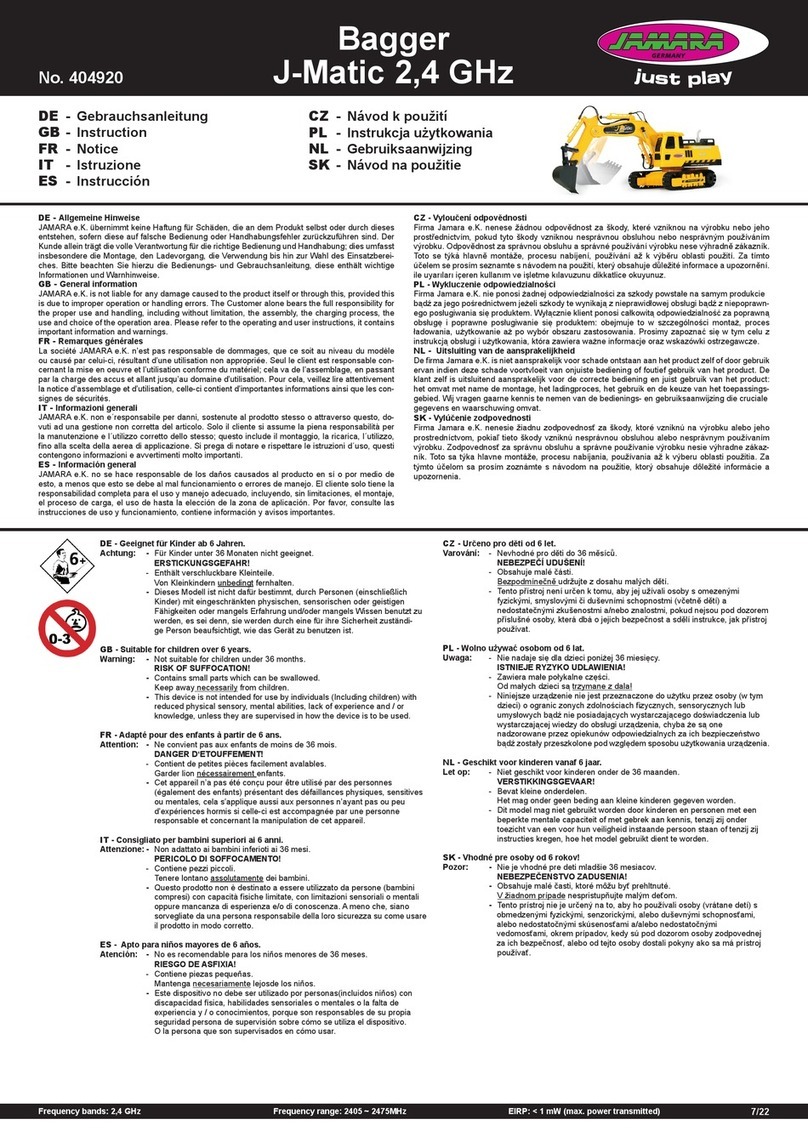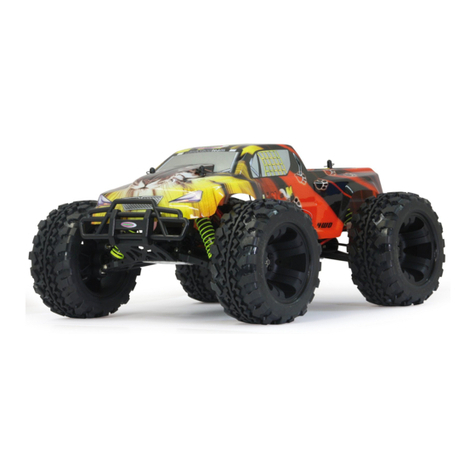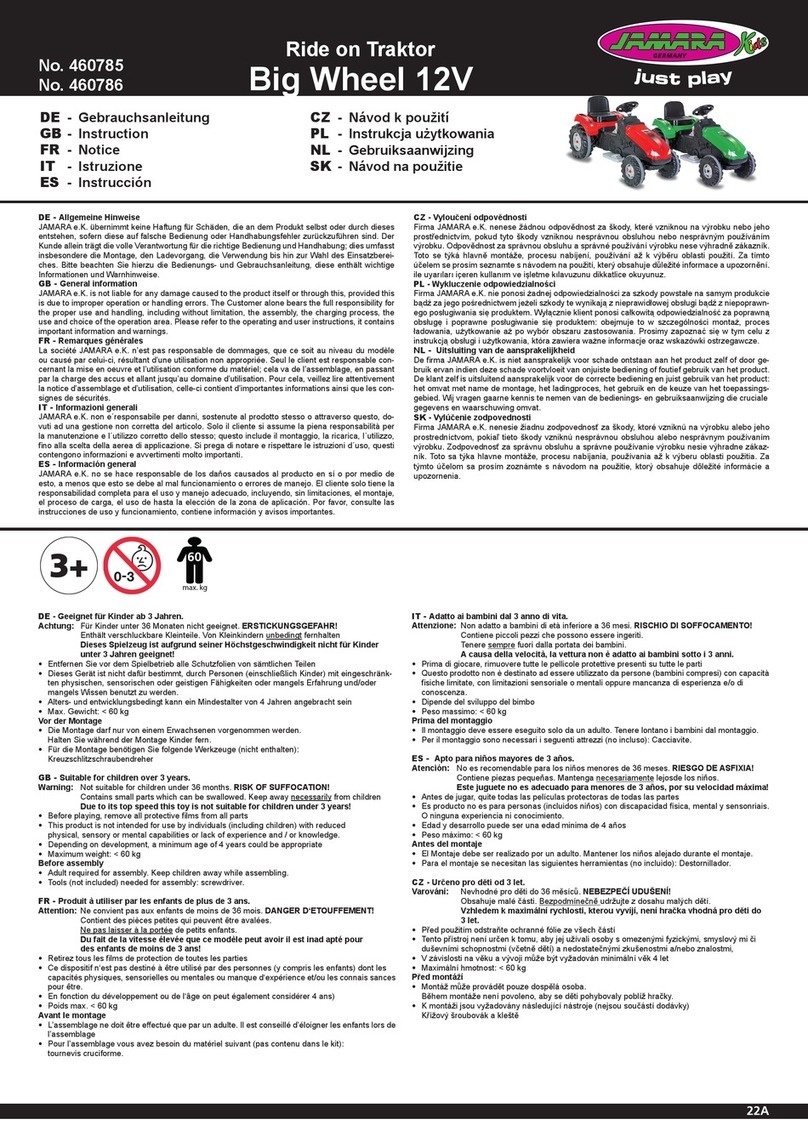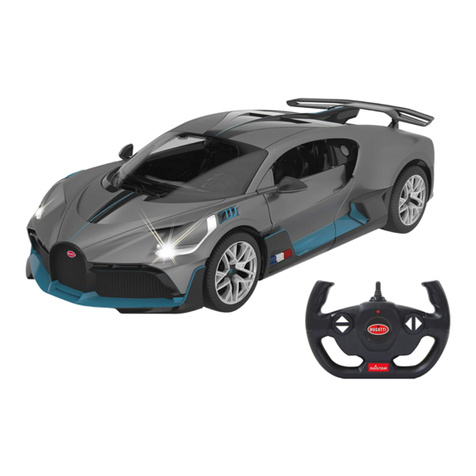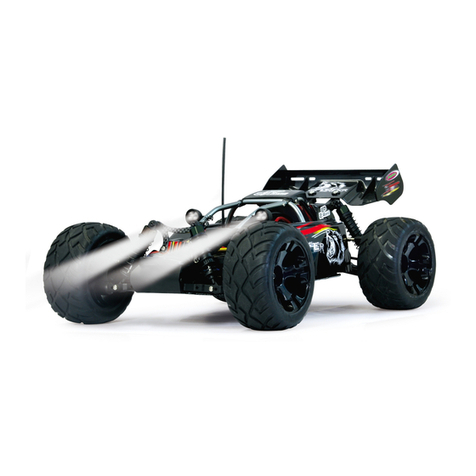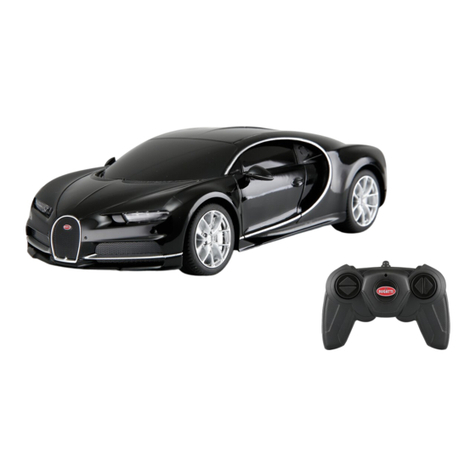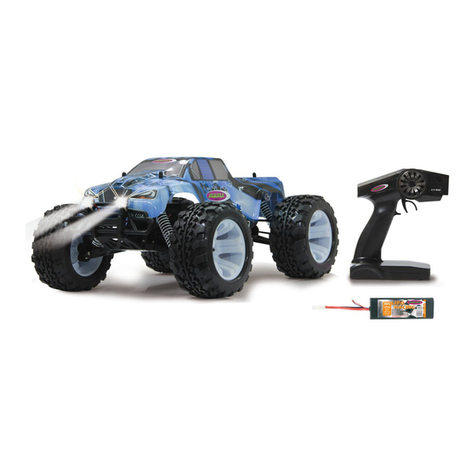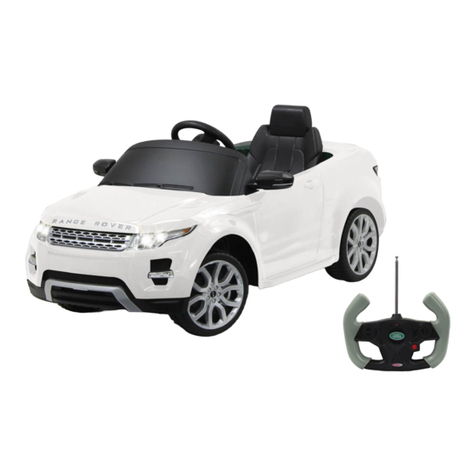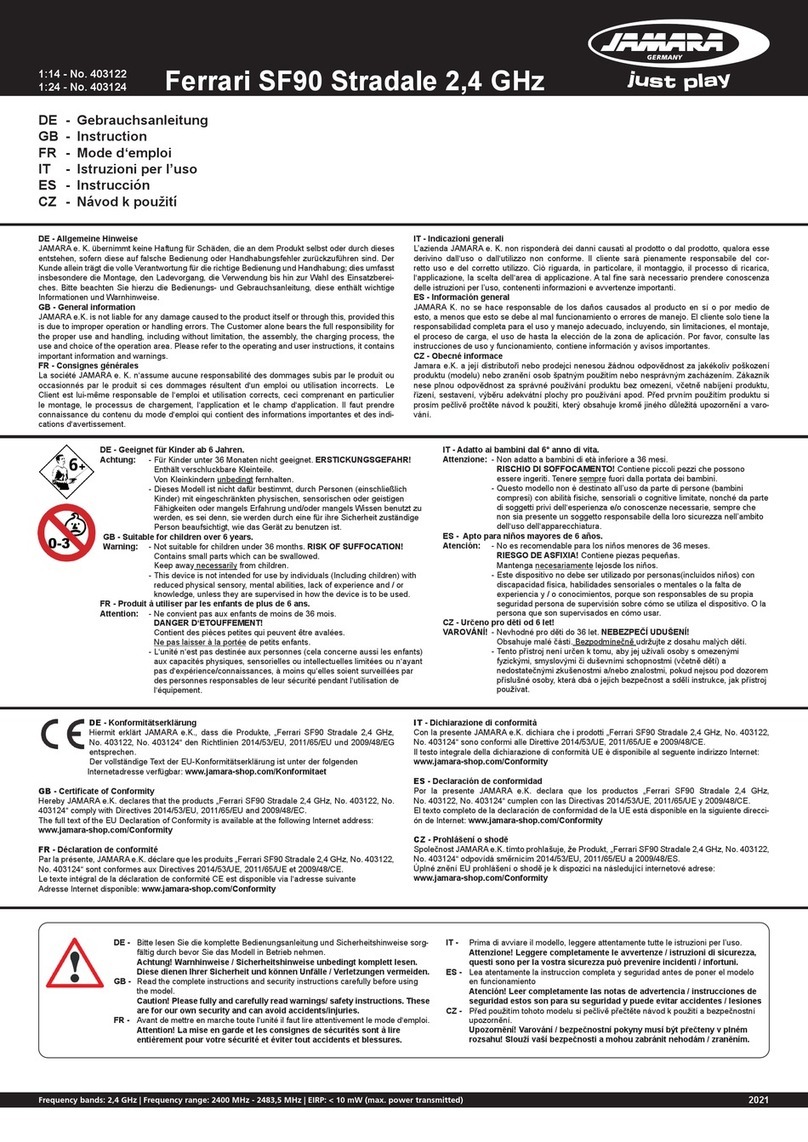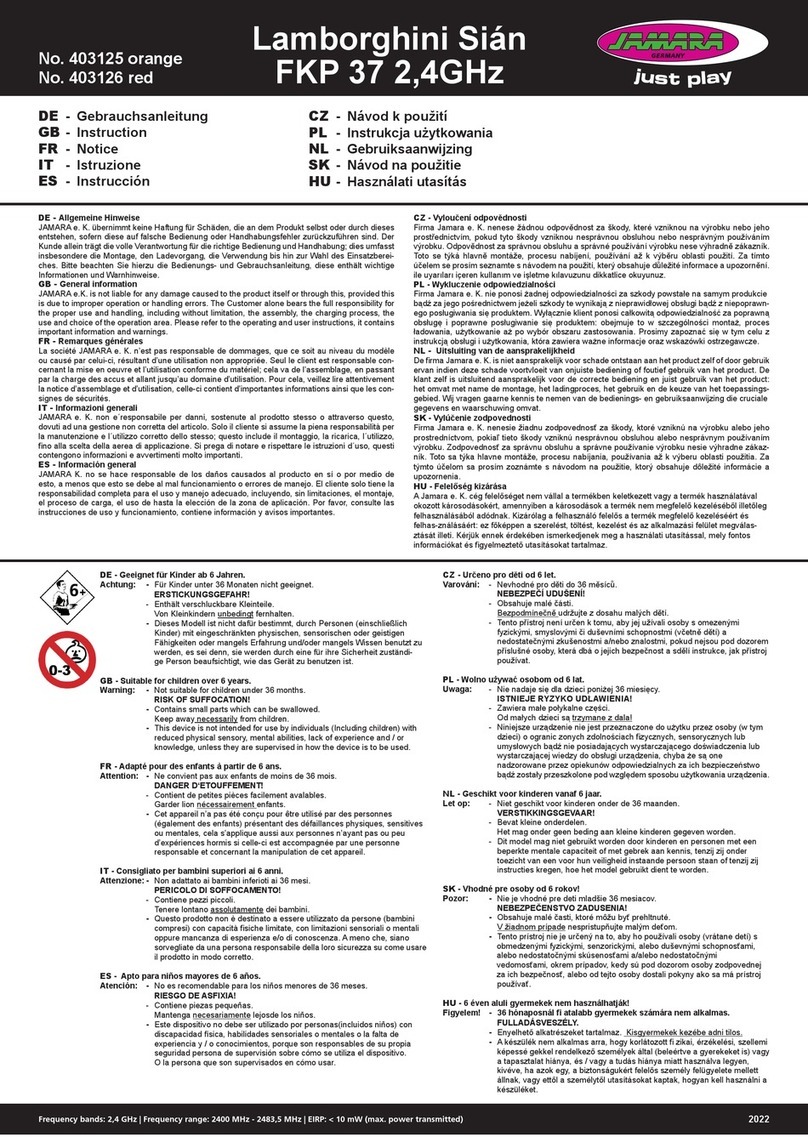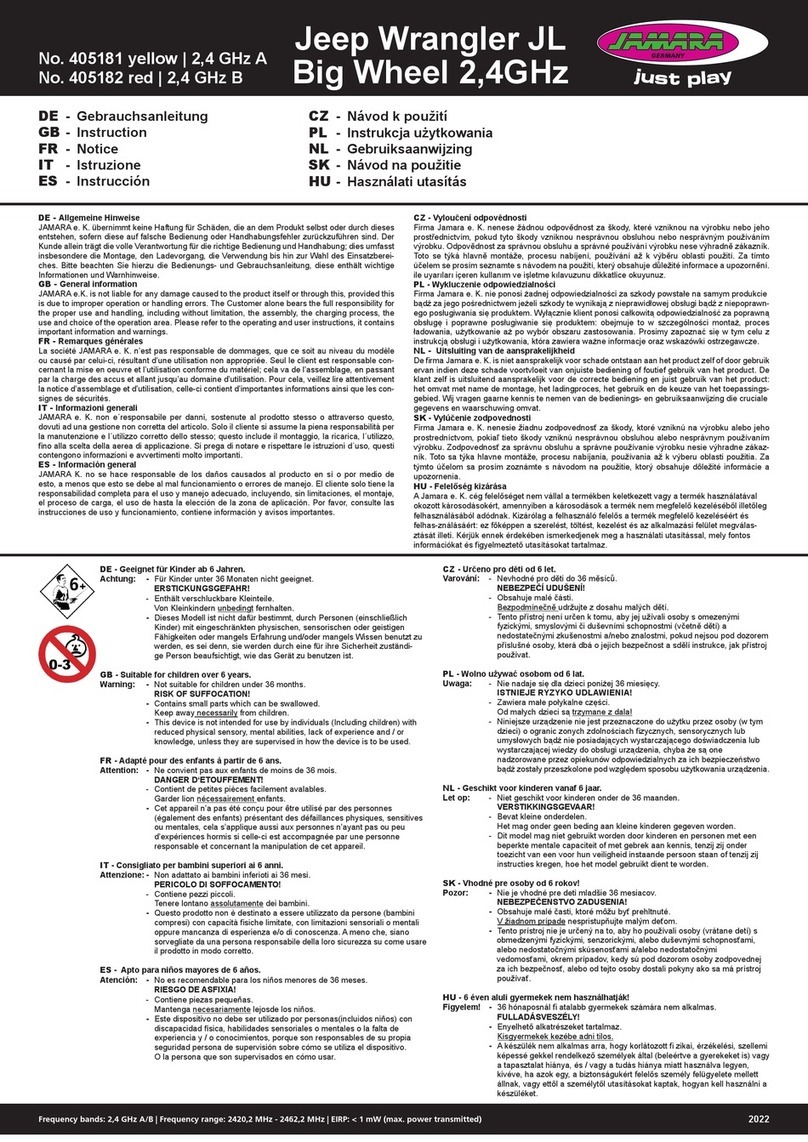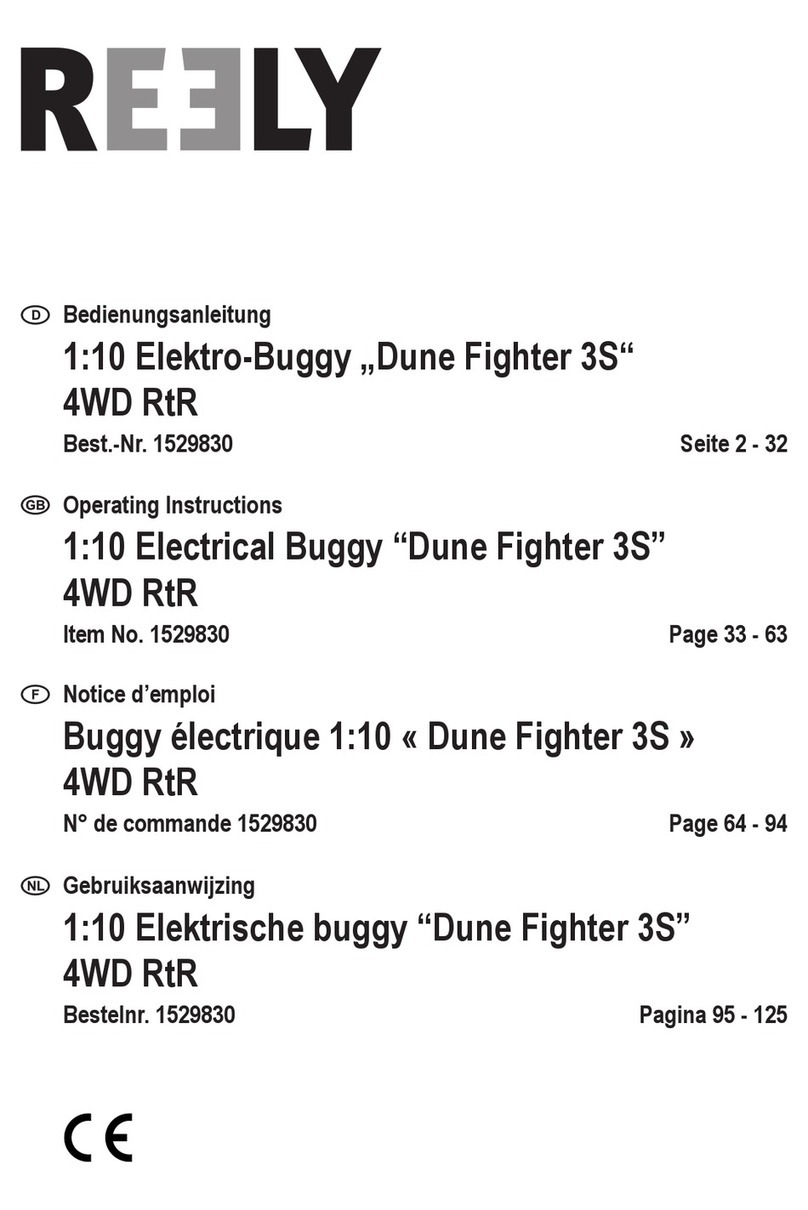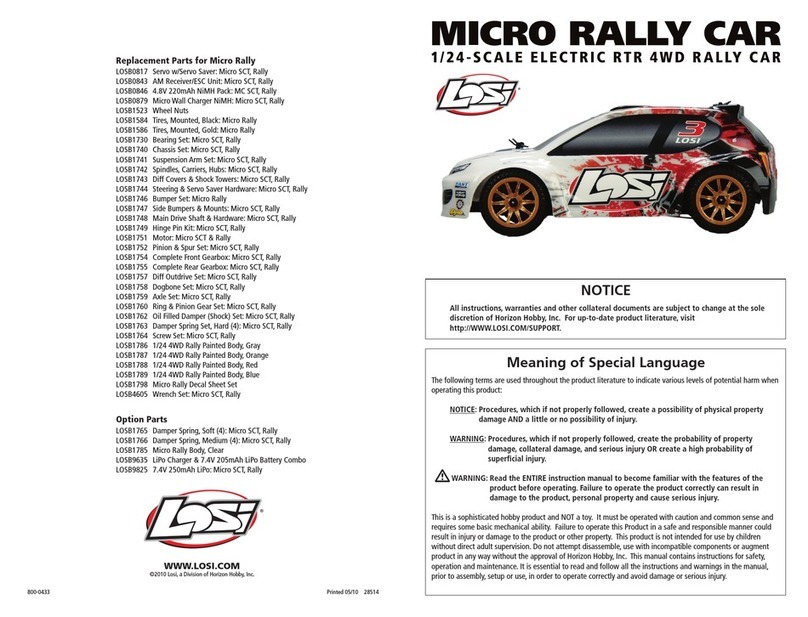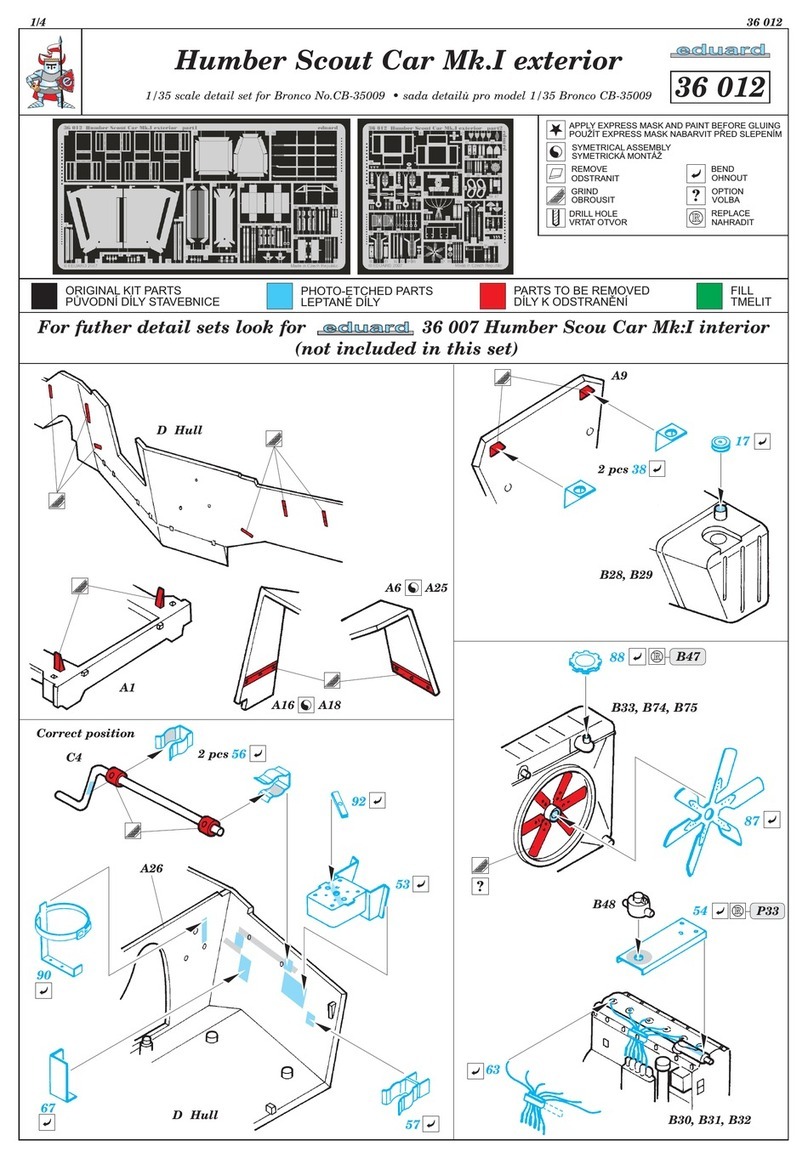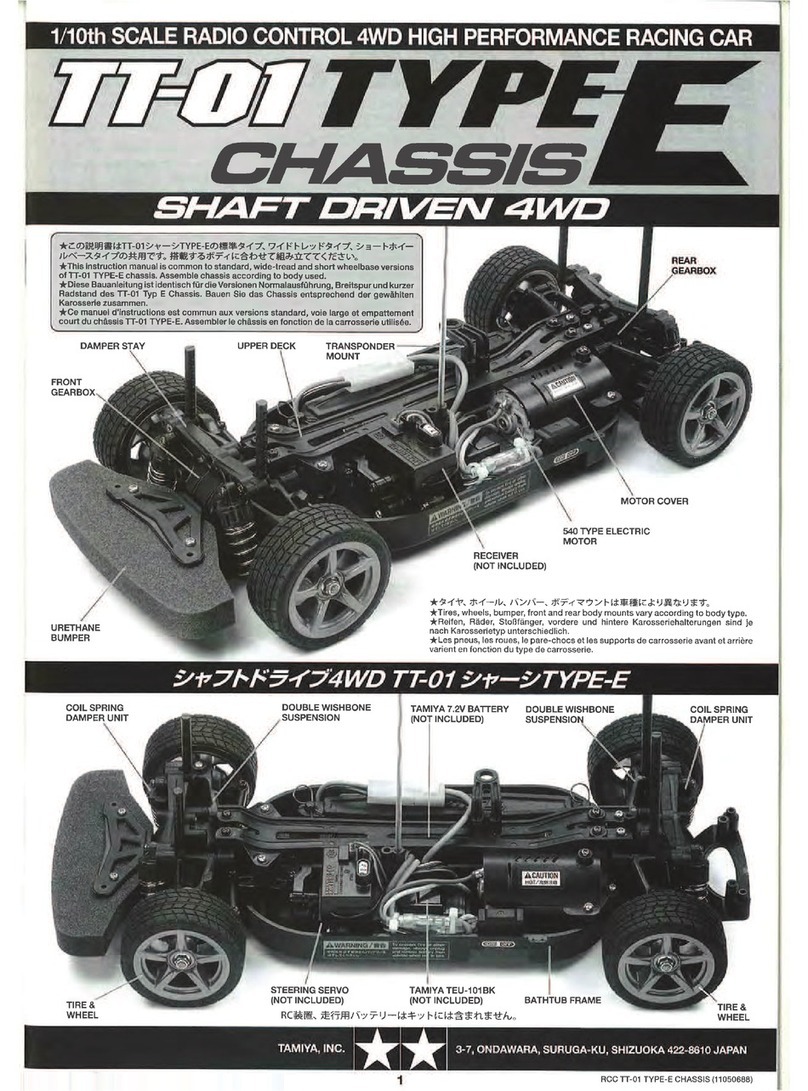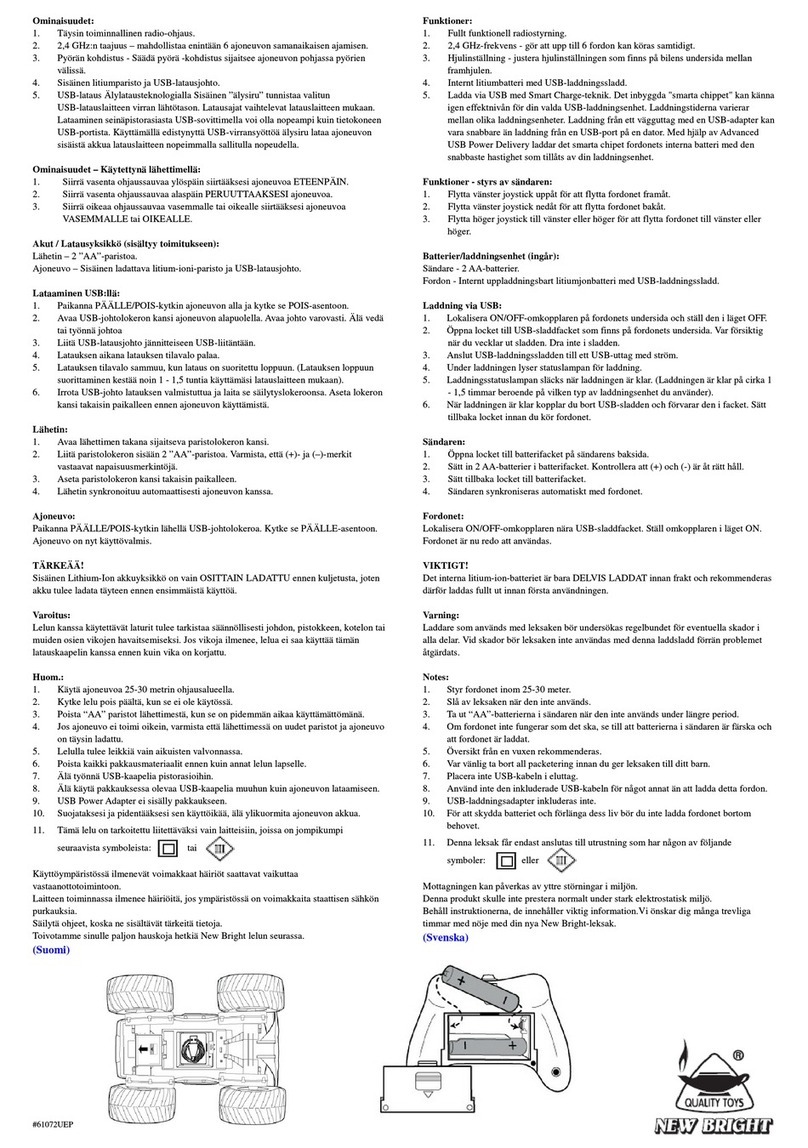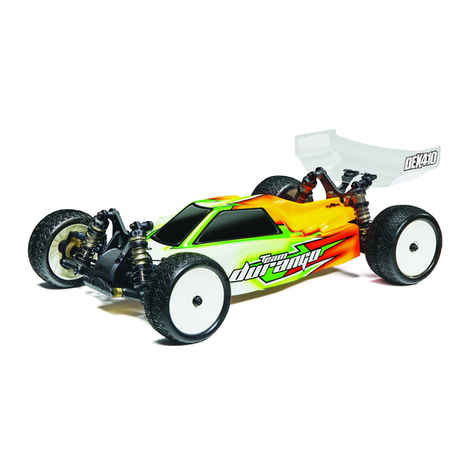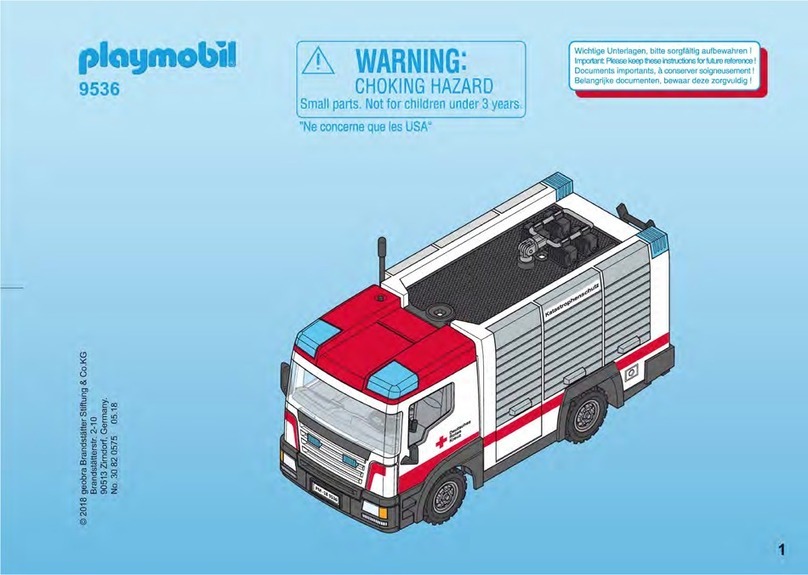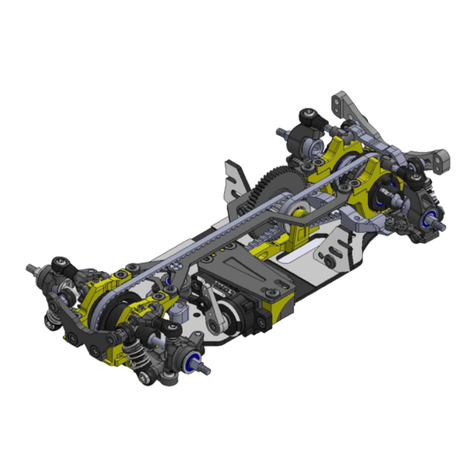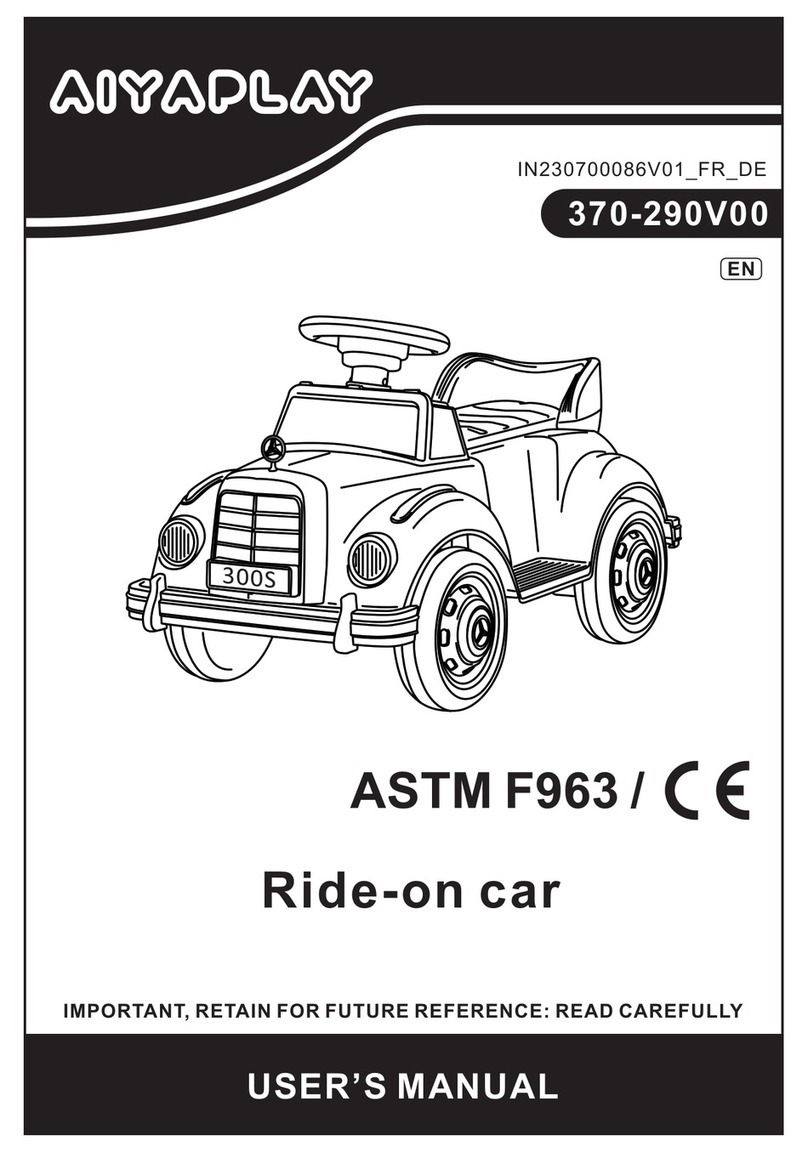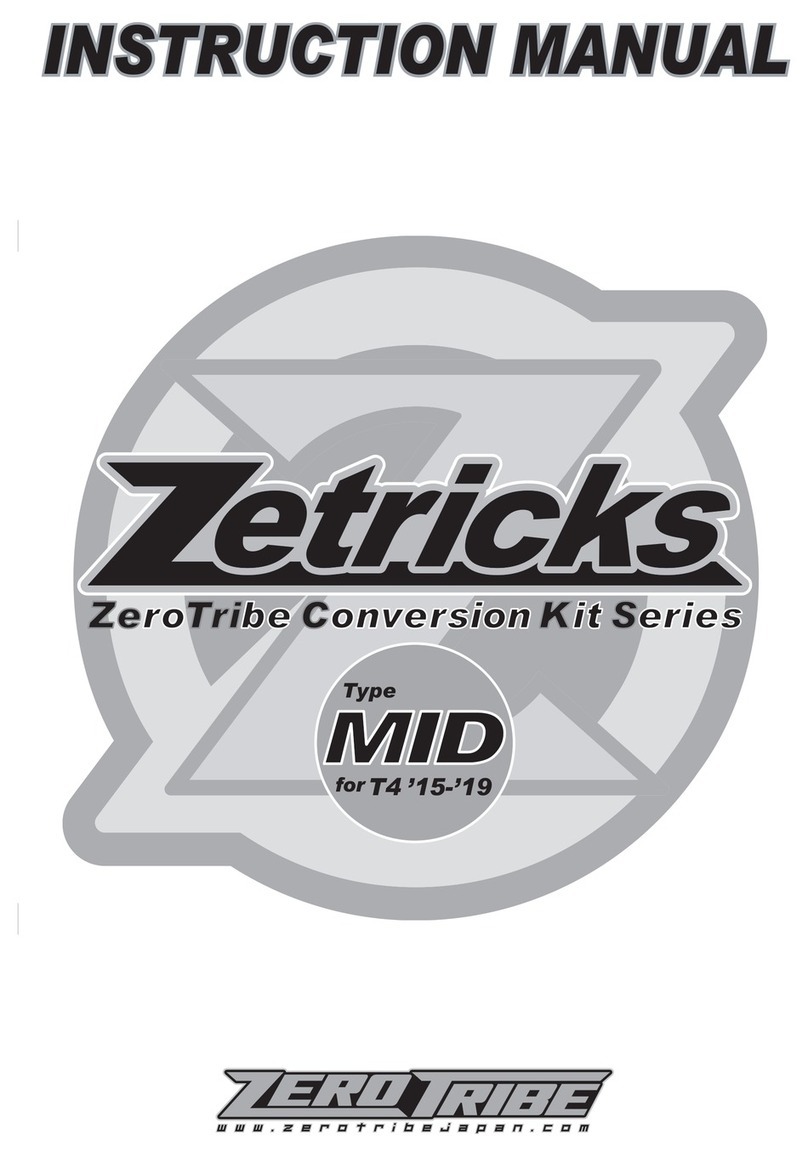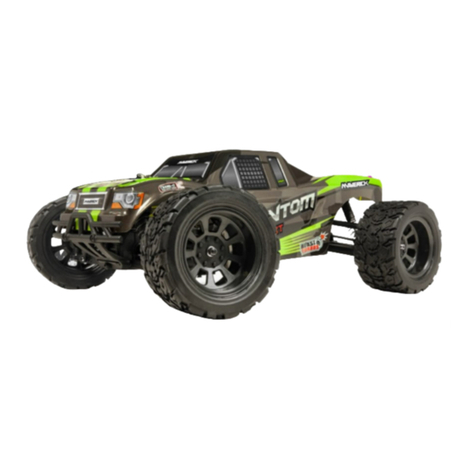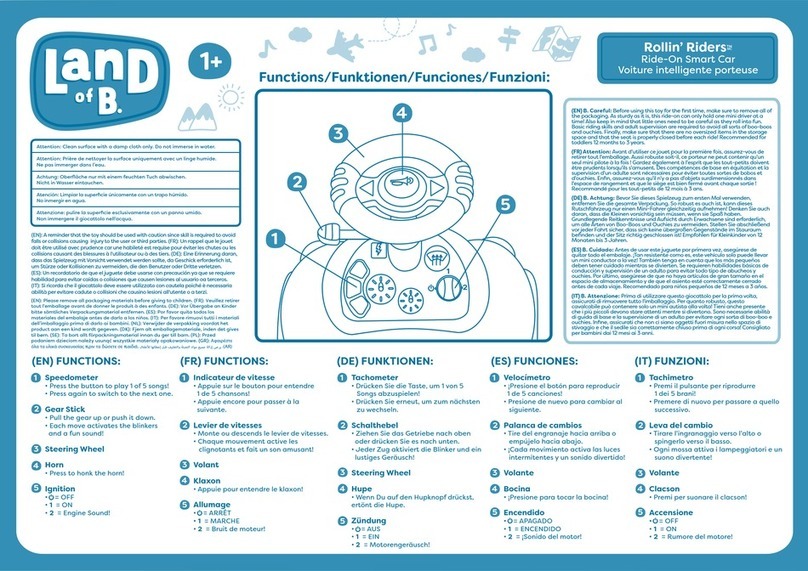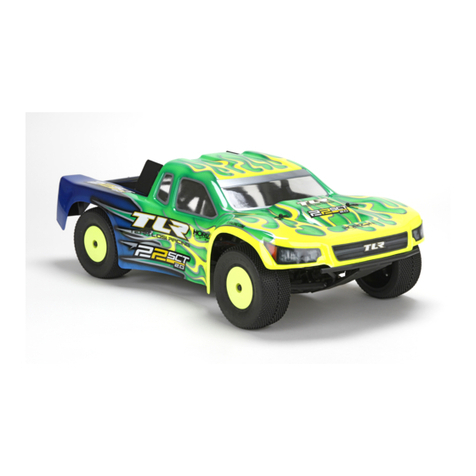
6
IT - L‘uso del regolatore
Collegamento della ricevente, la batteria e il motore
Collegare il regolatore, la ricevente, la batteria, il servo e il moto-
re in base alla seguente tabella. Prestare attenzione alla polarità
della batteria di alimentazione. Collegare il lo rosso al terminale
‚+‘ e il nero con il „-“ della batteria. I terminali # ‚A‘ # # B e C‘ de-
vono essere collegati ai morsetti del motore. Il tasto ‚SET‘ viene
usato per la programmazione. Collegare l‘uscita del „canale 2“
della ricevente con il regolatore. Osservate l‘assegnazione dei
canali sul telecomando. Collegare le uscite del regolatore ai mor-
setti del motore. Non esiste un´assegnazione consigliata. Dopo
che tutto è collegato, è ne cessario di eseguire un test. Se il mo-
tore gira nella direzione sbagliata e consigliato di invertire i cavi
oppure vericare il tasto reverse sul radiocomando.
Nota
È possibile utilizzare la funzione inversa del radiocomando per
cambiare la direzione di rotazione del motore. È necessario di
riprogrammare il regolatore.
GB - Using Your ESC
Connecting the Receiver, Battery Pack and Motor
Connect the ESC, motor, receiver, battery and servo according
to the diagram.
Ensure that you observe the correct polarity of the battery pack.
The red cable should be connected to the ‘+‘ Plus Pole and the
black cable to the ‘-‘ Minus Pole. The ’#A’, ’#B’ and ’#C’ plugs
are connected to the motor. The ‘SET‘ button initiate the pro-
gramming mode.
The ESC should be plugged into the throttle channel of your re-
ceiver which is normally channel 2. If in doubt, check your Radio-
Control System’s instructions. The 3 Motor wires (#A’, ’#B’ und
’#C’) can now be connected, these connectors can be plugged in
any order, and if the motor rotates in the wrong direction any 2 of
the wires should be swapped.
Note:
You can use the servo reverse function of your transmitter to
reverse the motor direction but the ESC will have to be re-ca-
librated afterwards.
Motor
#A
#B
#C
ESC
Channel 2
Switch
Receiver
Channel 1
Servo
Plus pole
red cable
Minus pole
black cable
Set
ON/OFF
Apprendimento della corsa gas / freno
Per prestazioni ottimali, il regolatore deve essere calibrato. In tal modo, le tre posizioni avanti,
indietro e la posizione di folle devono essere specicata. Ci sono tre ragioni per la necessità di
calibrazione:
• Durante il primo avvio
• Eettuando un cambio della trasmittente
• Dopo una riprogrammazione del punto neutro e / o la corsa del servo del trasmettitore
Durante la regolazione procedere come segue:
1. Accendete il radiocomando, durante che la ricevente è spento. (Attenzione con sistema di
Futaba: In certi casi la funzione del gas è invertita). La corsa servo deve essere in posizione
neutrale. Fare attenzione che la funziona ABS sia spenta.
2. Poi accendere la ricevente tramite l‘interruttore sul regolatore. Tenendo premuto il tasto ‚SET‘.
Questo vi porterà alla modalità di calibrazione, il LED inizia a lampeggiare. Appena il LED
lampeggia, rilasciare il pulsante. Se non si rilascia il tasto ‚SET‘ subito dopo il LED inizia a
lampeggiare e si entra nella modalità di programmazione. Se non si desidera questo, è
necessario a spegnere nuovamente il regolatore. La gura seguente mostra il processo
d’inizio di calibratura.
3. E´possibile congurare tre parametri:
• Posizione neutra
• Fine corsa marcia avanti
• Fine corsa marcia indietro
In seguito trovate le immagini,dove sono presentati i processi e le procedure gracamente.
4. Portare la leva del gas in posizione neutrale e premere il tasto ‚SET‘, il LED verde lampeggia
una volta e il motore emette un suono. Portare la leva del gas in posizione nale per il
movimento in avanti e premere il tasto `SET il LED verde lampeggia due volte e il motore
emette due suoni. Portare la leva del gas in posizione nale per il movimento indietro e
premere il tasto `SET`, il LED verde lampeggia tre volte e il motore emette tre suoni. Attendere
tre secondi, dopodiché è terminato il processo di calibrazione
Throttle range calibration
To ensure that your ESC operates correctly it has to be calibrated. During this process the full
throttle, stop and brake positions will be set. There are 3 occasions when the unit must be
calibrated.
• Before using the ESC for the rst time
• If you change to a new transmitter
• If the neutral point or servo throw is changed within your transmitter
To calibrate the system, please proceed as follows:
1. Ensure that the receiver is switched OFF and switch ON the transmitter. If you are using a
Futaba transmitter. The throw should be set to neutral. If the transmitter is tted with an ABS
function this must be de-activated.
2. Press and hold down the ‘SET‘ button on the ESC and switch the receiver switch ON. This will
switch the ESC into Calibration’ mode and the LED will begin to blink. If you fail to release the
‘SET’ button as soon as the LED blinks, the ESC will enter ‘Programming’ mode. If this
happens, you will have to switch the ESC o and start again to enter ‘Calibration’ mode.
3. Parameters can be set here:
• Neutral point
• Full throttle forwards
• Full throttle reverse
The procedure for setting these 3 points is outlined below:
4. Ensure that the throttle control is in the neutral position and press the ‘Set‘ button. The green
LED will ash once and the motor will omit a beep. Move the throttle control to the full throttle
(forwards) position and press the green ‘Set‘ button. The green LED will ash twice and the
motor will omit 2 bleeps. Move the throttle control to the full reverse position and press the
‘Set‘ button. The green LED will ash 3 times and the motor will omit 3 bleeps. 3 Seconds after
this procedure has been followed, the motor is ready for use.
Gusto presa sul SET Stampato interruttore ON Lasciate che il pulsante SET quando
le luci rosse lampeggiano crostate
Hold the SET keep button Turn on the switch Release the SET button as soon
as the red LEDstarts to blink
ON/OFF
1
ON/OFF
Set LED
Neutral point
rst click second click third click
Point of full throttle Point of full brake
2
LED verde
lampeggia una volta
Green LED ashes
once
LED verde
lampeggia due volte
Green LED
ashes twice
LED verde
lampeggia tre volte
Green LED
ashes thrice
Set
Set Set
Segnali e dispositivi di sicurezza
Durante il normale funzionamento, i segnali LED hanno i seguenti signicati:
a. Quando l‘acceleratore è in posizione neutra, non è accesa né la LED rossa né la LED verde.
b. Il LED rosso si accende quando il veicolo è in movimento in avanti o indietro. Durante la
frenata, il LED rosso lampeggia velocemente.
c. I LED verde si accende quando il generatore di gas e in max. posizione avanti o indietro.
Tramite segnali d’avviso, il regolatore richiama l‘attenzione su determinate condizioni:
1. Durante l´avvio, il processore controlla la tensione d’ingresso, quando è al di fuori dei limiti
consentiti, un tono duale con una pausa di un secondo tra i singoli segnali „bipbip, bip-bip,
bip-bip-“ lo segnala.
2. Quando il segnale d’ingresso non è corretto, sarà generato un suono con una pausa di due
secondi tra i singoli segnali „bip-,-bip, bip-“. Questo regolatore è dotato di una serie di
dispositivi di sicurezza per un funzionamento sicuro:
1. Spegnimento sottotensione:
Non appena la tensione di una batteria LiPo, per un periodo di 2 secondi, va sotto la soglia
impostata, il motore si spegne. Notate che il motore non può essere riavviato, se la tensione
di una cella è inferiore a 3,5 V. Batterie NiCd o NiMH con una tensione compresa tra 9,0 V e
12,0 V, sono trattate come una batteria LiPo a tre celle. Le batterie con meno di 9.0 V come
un due-celle LiPo-Pack. Se per esempio, una batteria NiMH ha una tensione di 8,0 V, e la
soglia è impostata a 2,6 V per cella LiPo, l‘arresto avviene a 5,2 V (2 x 2,6 V). Cosi anche le
celle di NiCd, sono ecacemente protetti contro una scarica profonda.
2. Spegnimento per sovratemperatura:
Appena la temperatura del regolatore, per una durata di 5 secondi, supera il valore di 95 ° C,
il motore si spegne. Dopo lo spegnimento, è necessario lasciare rareddare il regolatore,
altrimenti il regolatore sarà danneggiato. Questa funzione non può essere disabilitata!
3. Segnale d´ingresso difettoso
Se il segnale d’ingresso per un periodo di 0,2 sec è rilevato come errato e motore si spegne
LED’s, errors and protection
In normal use the LED will illuminate as follows:
a. If the throttle control is in the neutral position, neither the red or green LED will illuminate.
b. The red LED will illuminate if the vehicle is driving forwards or in reverse. If the vehicle is
braking, the red LED will ash rapidly. When the car moves forward, the red LED solidly
lights; the green LED also lights up when the throttle stick is at the top position (100%
throttle).
c. The green LED will illuminate when the vehicle is at full throttle either forwards or in reverse.
In certain circumstances the ESC will omit an acoustic tone to warn you of a problem:
1. On switching on, the ESC will check the battery pack voltage and if it falls outside the correct
values it will omit double signals followed by a 1 second pause: “beep-beep-, beep-beep-,
beep-beep-”
2. If the ESC does not receive a signal from the transmitter it will omit single signal followed by
a 2 second pause: “beep-, beep-, beep-”
The ESC has ben equipped with a series of protective circuits to ensure safe operation:
1. Low voltage cut-o:
If the voltage drops below the set value for more than 2 seconds the ESC will switch the
motor o. Please note that the motor cannot be started again if the voltage is below the
choosen value per cell.
2. Temperature cut-o
If the internal temperature of the ESC rises above 95°C for more than 5 seconds the motor
will switch o. After the ESC switches o it has to cool down before operating again.
Otherwise the ESC will be damaged. This function should not be disabled!
3. Signal loss
If the signal is lost for more than 0.2 seconds the ESC will switch the motor o.
